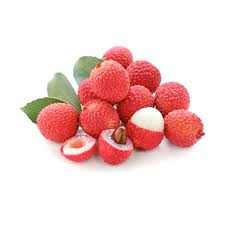The outbreak of ‘encephalitis’ among Muzaffarpur’s children, may actually be caused by Muzaffarpur’s famous litchis (lychees), say a team of virologists led by Dr T. Jacob at the Christian Medical College (CMC), Vellore, in Tamil Nadu. The findings were published in Current Science last month (December 2015).
Jacob and his team confirm that a toxic chemical in the fruit of the Asian lychee tree (Litchi chinensis) is responsible for outbreaks of a fatal brain sickness in children in Bihar state where the fruit is commercially grown. The study has helped save hundreds of poor kids in Bihar. These kids would often go to bed hungry, mainly eating the fallen fruit of the lychee orchards.
The chemical is called ‘Methylene cyclopropyl-glycine’ (MCPG) or hypoglycin G. It was detected in both semi-ripe and ripe lychee fruit by the virologists.
The chemical is similar to another poison called methylene cyclopropylalanine (MCPA), which is found in ackee (Blighia sapida), a West Indian fruit. Both lychee and ackee come from the Sapindaceae (soapberry) family of plants.
MCPG is known to cause hypoglycaemic encephalopathy, a metabolic illness that affects the brain when body sugar levels are low due to fasting or undernourishment. So, malnourished kids consuming litchi (lychee) fruits are prone to be affected. Earlier, viral encephalitis was suspected to be causing the deaths. “When no virus was detected, researchers suspected a toxin from pesticides or from the fruit itself,” says John.
In 2013, at the request of India’s ministry of health and family welfare, John camped in Muzaffarpur, Bihar, where many of the deaths had occurred. “Children there were found having low blood sugar levels which aided metabolic diseases,” John tild a science website.
Only undernourished children living near lychee orchards appeared to suffer and during May and June, when the fruit is harvested. “The victims had signs of brain cell damage and seizures, indicating that a toxin and not just undernourishment was causing the disease,’’ says John.
When a person is fasting, stored glycogen is released initially for energy production. Later, body fat is mobilised and this requires breakdown of fatty acids aided by carnitine and coenzyme. MCPG forms compounds with carnitine and coenzyme A, thus using up these vital chemicals. Both carnitine and coenzyme A are essential for fatty acid metabolism.
“When this metabolism is impaired, hypoglycaemia develops,” Maya Thomas, a paediatric neurologist at CMC Vellore, says.
The toxin is seen in high concentrations in the seed and semi-ripe pulp. “Children who are malnourished are most vulnerable as they have low glycogen stores,” says Thomas.
While MCPG was known to be present in lychee seeds, the study established its presence in the flesh of the fruits as well, says John.
Immediate treatment for victims includes administration of glucose, says John. “Villagers have been told to let children eat the fruit only after a meal,” John says.
Mystery no more
“Until our studies in 2013, this disease was misclassified by all others as acute viral encephalitis first and later as acute encephalitis syndrome, since no viral agent could be detected after years of search . Media had been calling it a mystery disease, as no definitive clinical diagnosis consistent with International Classification of Diseases had been made, in spite of investigations dating back from 1995 onwards by many investigators – local, national and international, says the study.
“The last missing piece of the puzzle of the Muzaffarpur hypoglycaemic encephalopathy was the question of the presence of MCPG in litchi fruits. The likelihood of children swallowing litchi seeds is extremely low. However, children eat litchi fruits, available in plenty during the harvest season. One of us (T.J.J.) has interviewed knowledgeable local people and learnt two interesting facts. The majority of affected children belong to the families of litchi harvesting labourers who camp in litchi orchards for harvesting the fruits early in the morning, before sunrise. Second, only fruits in bunches are saleable, but the many single fruits that fall to the ground have no commercial value and are free for children to pick up and hoard for eating later. A previous study found strong association of litchi consumption by children with the disease.” (quoted from the study).
Bihar responds
In view of these observations and conclusions, the Government of Bihar has already introduced some interventions.
In 2015, the local health workers have campaigned in the litchi-cultivating communities to teach the locals that no child should go to bed at night without eating a cooked meal and for parents to restrict children eating litchis in the evening to none or very few.
Unfortunately, no one is monitoring the outcome of these interventions. All primary health centre medical officers have been taught to draw blood for glucose measurement and immediately infuse 10% dextrose, instead of sending the children with encephalopathy to the two designated referral hospitals in the district headquarters, which may involve hours of delay that results in risk to life or full brain recovery . Thus, both preventive and curative interventions are already in place to save the lives of many children.


